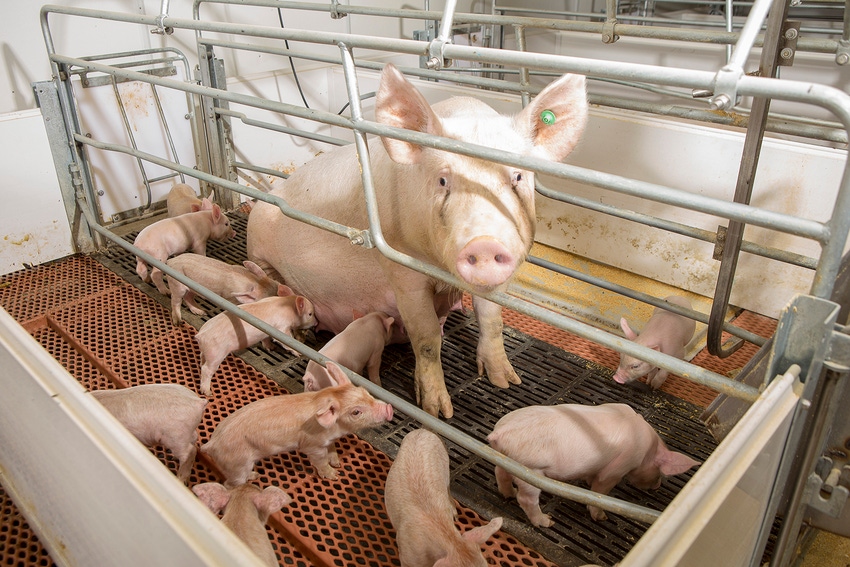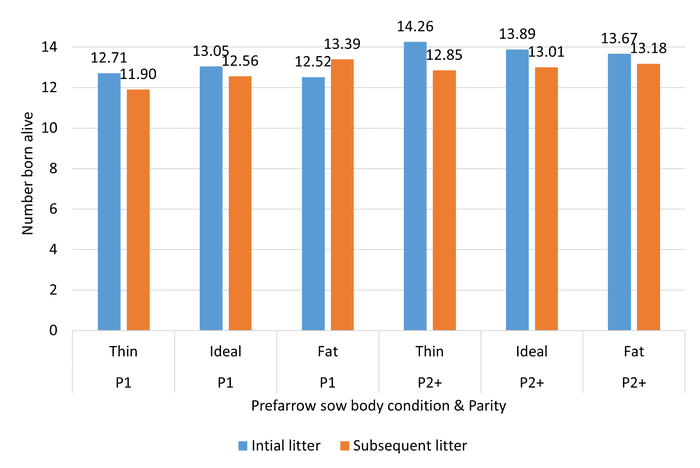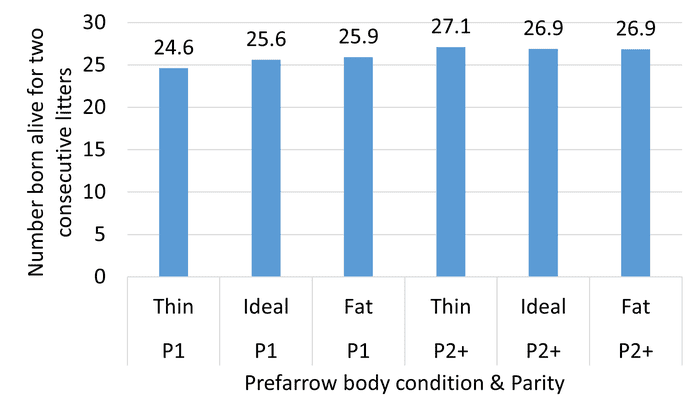Differences in prefarrow body condition impacted subsequent litter size in first litter females substantially more than in multiparous sows.
September 1, 2022

Seasonality in reproduction can impair our ability to maintain consistent throughput. Sows that lactate during warm summer months may have poorer subsequent litter sizes and farrowing rates when compared with sows that lactate during non-summer months.
Our team recently evaluated the impact of parity and prefarrow sow body condition, in a hot environment, on subsequent farrowing rates. In this article, we will evaluate the impact of summer body condition score at farrowing on litter size and subsequent litter size.
Data was collected on 1,330 sows at a 3,600 sow commercial farm in eastern North Carolina from May to August 2021. The cooperating farm had a history of experiencing seasonality in reproduction. Traits recorded included sow caliper score at farrowing (Knauer scale - <12 = "thin," 12 to 15 = "ideal," >15 = "fat"), litter size and subsequent litter size.
Results
Figure 1. shows the association between summer body condition and sow parity on litter size. After lactating in the warm summer months, all sow categories except "fat" gilts had a lower subsequent litter size. Within each parity group, "thin" sows had the lowest subsequent litter size and "fat" sows had the greatest subsequent litter size. Yet differences in prefarrow body condition impacted subsequent litter size in first litter females substantially more than in multiparous sows.

Figure 2. shows the association between summer body condition and sow parity on number born alive for two consecutive litters (the values in Figure 1. combined). Results show that "fat" gilts farrowed the most live born piglets over the first two parities. Within multiparous sows, no statistical differences were seen across body condition categories for number born alive in two consecutive litters.

Takeaways
Observational data should generally be viewed with caution. Yet it can provide insight and anecdotal evidence when planned experiments are not available. Based on litter size and farrowing rate data from this project, we would recommend farrowing gilts on the low side of the "fat" category. If a herd has good lactation intakes on their first parity females, they may be able to farrow gilts on the high side of "ideal" and be fine. Regarding multiparous sows, our recommendations remain farrowing sows on the high side of "ideal." Given the body of data that we have collected, "ideal" appears to best balance feed cost, farrowing rate, litter size and piglet survival. The authors would like to thank the collaborating production company for their continued support. Questions can be sent to Mark Knauer via email.
References:
Bryan, M. R., C. E. Hostetler, and M. T. Knauer. 2013. Industry productivity analysis – Seasonality in sow farm traits. J. Anim. Sci. 91(Suppl. 2):94.
Knauer, M. T., and D. J. Baitinger. 2015. The sow body condition caliper. Appl. Eng. Agric. 31:175-178.
Schenkel, A. C., M. L. Bernardi, F. P. Bortolozzo, & I. Wentz. 2010. Body reserve mobilization during lactation in first parity sows and its effect on second litter size. Livestock Sci. 132: 165-172.
Source: Mark Knauer and Zack Peppmeier, who are solely responsible for the information provided, and wholly own the information. Informa Business Media and all its subsidiaries are not responsible for any of the content contained in this information asset.
You May Also Like



